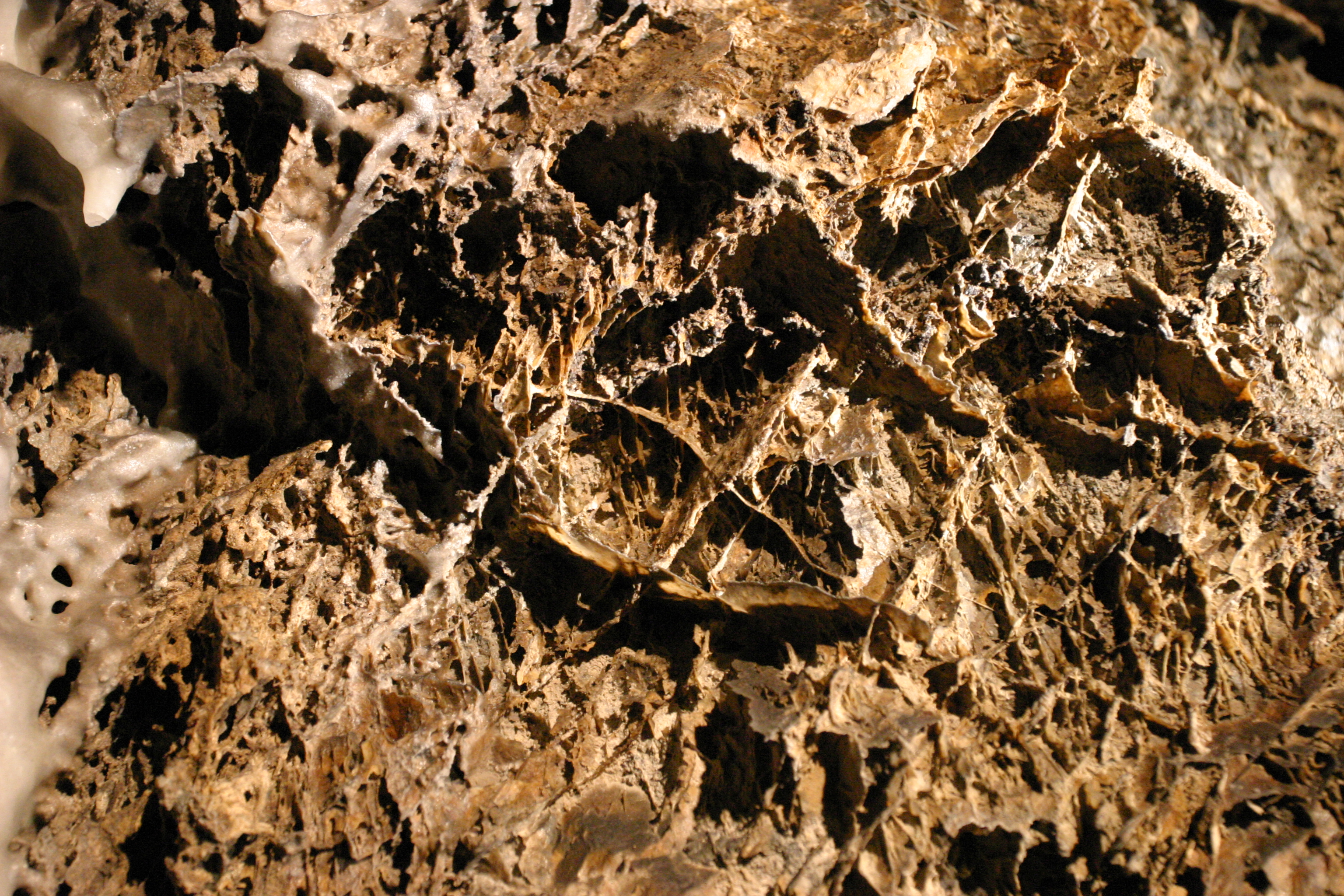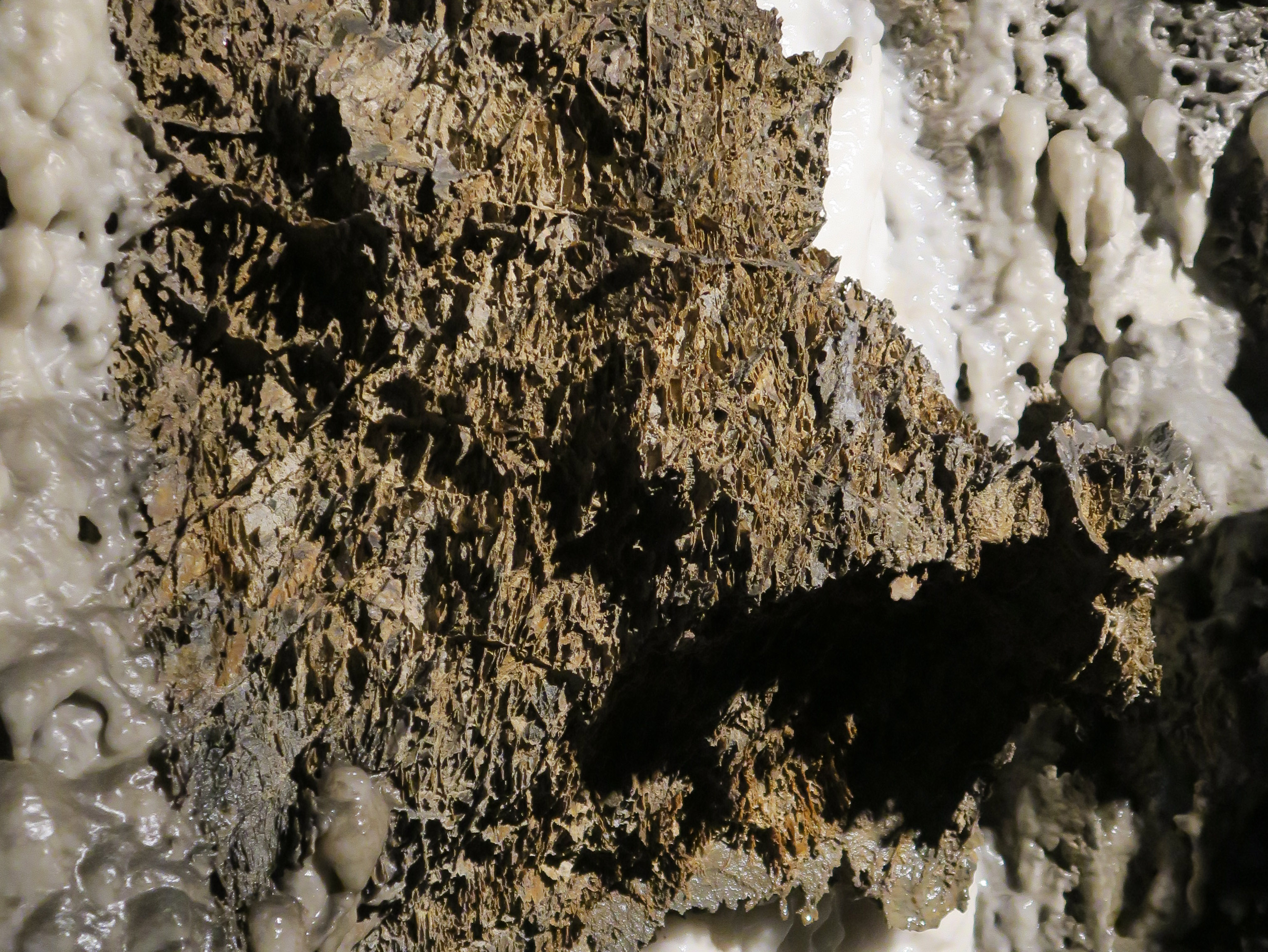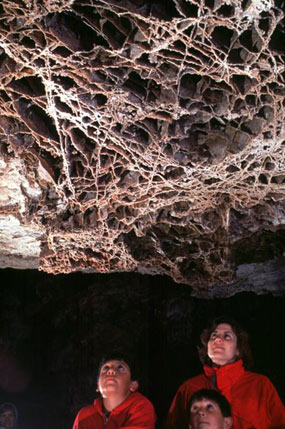English below

Boxworks nella Grotta del Vento
Boxworks in the Grotta del Vento
Prima che si formasse la Grotta del Vento, il calcare dolomitico nel quale si sviluppa il primo itinerario fu sottoposto a sollecitazioni meccaniche che produssero una fitta rete di minute fenditure che successivamente furono completamente colmate dalla calcite (carbonato di calcio). In un secondo tempo le acque sotterranee scavarono la galleria oggi percorsa dai turisti, levigandone le pareti. Poi il flusso continua dell’acqua cessò, e subentrò la forte corrente d’aria che dà nome alla grotta, provocata dalla presenza di due imbocchi situati a quote diverse.
Durante l’estate l’aria calda proveniente dall’imbocco superiore, a contatto con le pareti fredde della grotta si raffredda e il vapore acqueo in essa contenuto si condensa, formando un velo d’acqua che, acida per la presenza di anidride carbonica (acido carbonico), aggredisce la roccia in maniera differenziata.

Boxworks nella Grotta del Vento. Si noti il contrasto con le concrezioni.
Boxworks in the Grotta del Vento. The contrast with the formations can be seen
Il calcare dolomitico viene aggredito più velocemente della calcite pura, che resta sporgente formando la fitta rete di lamine sottili e taglienti che in precedenza costituivano il riempimento delle fenditure. Generalmente queste complesse ed insolite formazioni, dette boxworks, sono presenti solo in alcune grotte interessate da forti correnti d’aria.
Non è un caso che i boxworks più famosi del mondo si possano ammirare nella Wind Cave, un’altra grande grotta attrezzata per le visite turistiche situata presso Hot Springs, nel South Dakota (U.S.A.).

Nella Wind Cave i boxworks possono raggiungere dimensioni eccezional In the Wind Cave the boxworks can reach exceptional dimensions

Boxworks nella Wind Cave (North Dakota). Boxworks in the Wind Cave (North Dakota)
BOXWORKS
Before the Grotta del Vento formed, the dolomitic limestone inside which the first itinerary develops was exposed to mechanical forces which produced a thick network of minute cracks which subsequently were completely filled by calcite (calcium carbonate). In a second time the underground water dug the tunnel where today tourists go, smoothing the walls. Then the continuous flow stopped, and was replaced by the strong air current which gives the name to the cave, caused by the presence of two openings situated at different heights.
During Summer the hot air coming in from the top opening, on contact with the cold walls of the cave cools down and the water vapour it contains condenses forming a film of water which is acidic due to the presence carbon dioxide (carbonic acid) and attacks the rock in separate ways.
The dolomitic limestone is attacked faster than the pure calcite, which remains sticking out forming a thick network of fine sharp layers which formerly were what the cracks were filled with. Generally these complex and unusual formations, called boxworks, are only in some caves which have strong air currents.
It-s no coincidence that the most famous boxworks in the world can be admired in the Wind Cave, another big show cave situated near Hot Springs, in South Dakota (U.S.A.).







